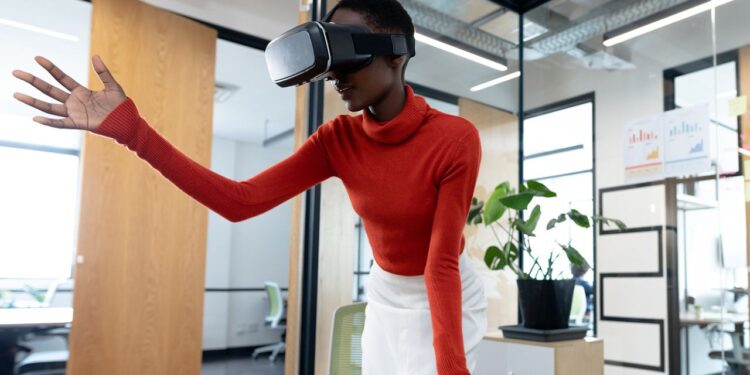- Technological advancements such as Meta, virtual reality, artificial intelligence, and advanced medical implants may change how we work, who works, how we meet others, and who gets a second chance at work.
- Just as in the 1920s, technological advancements created new jobs, and the hope is that the same will happen during the 2020s.
- Given the ever-growing turbulence of current events, it is difficult to say how the future of the 2020s will look.
The Roaring 20s was the period from 1920 to 1930 in which America experienced rapid economic, societal, and cultural growth. Likewise, the Roaring 20s marked the era of mass consumerism which has yet to cease since.
The 2020s feel the stark opposite of the roaring 20s; inflation is currently the highest it has been since 1981, and shortages in labor and supply are cropping up in virtually all domains of our economy.
Is there any hope that our 20s will be like the roaring 20s?
Of the significant similarities, technological change, changes in the way we work, and changes in what we value as a body of workers strongly resemble the events in America that occurred one hundred years ago.
What were the “Roaring 20s?”
From 1920 to 1929, economic growth in the United States doubled, and for the first time in the country’s history, more people lived in cities than in rural or farm-centered districts.
The shift from farmland to cities allowed a substantially more significant portion of the U.S. population to participate in the mass consumption society that overtook the nation after the industrial revolution.
Mass consummatory culture and the advent of mass communication through radio systems created profound shifts in American cultures, such as creating national trends and sharing regional trends. These are changes that have persisted up to the present day.
Entertainment had a profoundly extensive transformation in the 1920s, as that is when radios, cars, movie theatres, flights, and television all experienced profound revolutions in technological advancement. These are all still significant industries even to this day.
In each of these senses, the 2020s will likely resemble – indeed, in many ways already resembles – the roaring 20s.
How the 2020s may resemble the Roaring 20s
For example — profound social, economic, and societal shifts are not going away anytime soon. And these shifts have occurred in the first two years of this decade alone.
Technology is rapidly advancing. To give a stark picture of the speed of this advancement, it is estimated that by 2030 that 50 billion smart devices and advanced computers will be sharing, collecting, and analyzing data – as opposed to now, where the number of devices doing these same activities sits comfortably at 10 billion.
Some of these changes have already shifted the way people live, where they want to live, and what they value. And this lattermost change creates the most prominent resemblance between our times and the roaring 20s, though the exact differences are obviously dissimilar.
During the height of lockdowns in response to the coronavirus pandemic, many workers had time to reflect on what they valued. Many decided that their flexibility, personal autonomy, and creativity mattered more than the aims of the company they worked for.
This has led to somewhat of a worker’s revolution, where now more than ever in American history, workers have the upper hand over employers to supply their needs, like flexibility, autonomy, and better benefits. Women now take up more of the laborforce than at any other time in history.
Similar major shifts in work dynamics also occurred during the roaring twenties. For example, it was the first time in American history that there was a substantial uptick in female workers due to the efforts of suffragists paying off.
Entertainment is also on the verge of transforming the world in ways similarly Earth-shattering to changes that occurred during the roaring 20s. For example, many retail stores plan to close most of their stores and only keep flagship entertainment sites open.
Technological advancements such as Meta, virtual reality, artificial intelligence, and advanced medical implants may change how we work, who works, how we meet others, and who gets a second chance at work.
It might not all be online, but a lot more of it is and will continue to be – just as in the 1920s, technological advancements created new jobs, and the hope is that the same will happen during the 2020s.
Tech experts are split 50/50 on whether new technology will create or eliminate more jobs. Thus, we should expect both job loss and job gain – job loss in low-wage employment and job gain in medium to higher-wage work.
Despite the day-to-day optics of inflation and shortages of supply and employers, the U.S. economy is growing along with its technological sector. Similar changes were the driving force of changes in the roaring 20s that persist in our current society.
Some of these changes have already amounted to societal, cultural, and work-related changes, such as remote work, worker freedom, and expanding the employment-employer pool of relations.
Past this, given the ever-growing turbulence of current events, it is difficult to say how the future of the 2020s will look. There were no wars with the potential for global destabilization during the roaring 20s, and the pandemic of the times ended as the roaring 20s began.


 Dr. Gleb Tsipursky – The Office Whisperer
Dr. Gleb Tsipursky – The Office Whisperer Nirit Cohen – WorkFutures
Nirit Cohen – WorkFutures Angela Howard – Culture Expert
Angela Howard – Culture Expert Drew Jones – Design & Innovation
Drew Jones – Design & Innovation Jonathan Price – CRE & Flex Expert
Jonathan Price – CRE & Flex Expert














